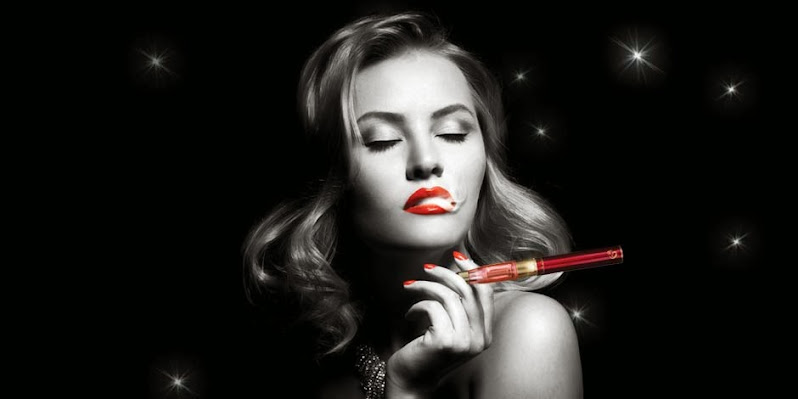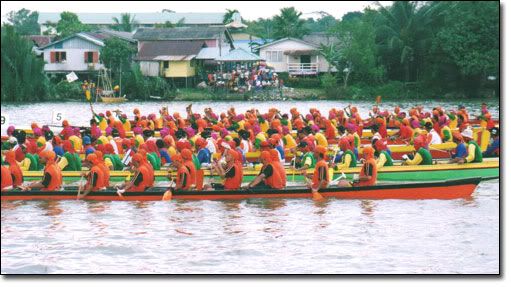So many things to say but yet so difficult to say them. But my I must write something for my blogs. What about the history of Sarawak Regatta. Ok lah.....
Other than known as the Land of Perfection (Darul Hana) during the Brunei Sultanate Period and now the Land of Hornbills, Sarawak is also known as the Land of Many Rivers. Certainly there are countless rivers, small and big ones, criss-crossing the largest state in Malaysia and playing important roles in the history and culture of its 24 ethnic groups. There are too many toponymns which derive their name from rivers including the name of the state, Sarawak. The capital city, Kuching, gets its name from a small river that no longer visible which once rose from the hill called Mata Kuching where trees known as mata kuching (not mata pusa) were found and its fruits said to resemble mata kuching (cat’s eyes). This simply shows how intricate the relationship between man and his rivers is in Sarawak.
In many ways, the link between men and the rivers are served by the boats. Until very recently rivers and boats are the major means of transportation and communication among big towns, small towns, villages and longhouses. If it could be called so, the climax of the intricate relationship of rivers and men with their boats was the annual regattas organized practically by all districts in Sarawak in the not so distant past when roads and cars were still rare and few. The annual regattas of the past were more than just boat racing but they were grand social events including peace celebrations, cultural performances and development exhibitions rolled into one big festivals.The famous regatta in Sarawak was known as the Baram Regatta first held in 1899 in Marudi. But it was not the first. As the available historical records are concerned, the first regatta was held in January 1871 in Kuching known as the Sarawak Regatta. Practically every other district towns throughout the state followed and turned the regattas into great annual social event until the advent of more cars, planes and fast boats in 1970s.
The first Baram Regatta in 1899 in Marudi perhaps epitomized to the timeless value of regattas in Sarawak. The chief architects of the Baram Regatta was no other than the Resident, Charles Hose whose reminiscene could be found in his book, the Natural Man.
“Some thirty years ago it was my privilege to be present at a meeting at Marudi (Claudetown) in the Baram district, and in the presence of an overwhelming force of the tribes loyal to the Government of Sarawak, of all those tribes whose allegiance was still doubtful, and all those who were still at a variance with each other. The object was to abolish old bloodfeuds and persuade the tribes to aid the Government in keeping the peace. In calling this conference, I felt that in order to suppress fighting and headhunting, the normal young Bornean’s natural outlet, it would be well to replace them by some other equally violent, but less disastrous, activity; and I therefore suggested to the tribes a sort of loca Henley, the chief feature of which would be annual race between the war-canoes of all the villages. The proposal was taken up eagerly by the people, and months before the appointed day, they were felling the giants of the forest and carving out from them the great war-canoes that were to be put to this novel use, and reports were passing from village to village of the stupendous dimensions of this or that canoe, and the fineness of timber and workmanship of another.
Between the people living on the banks of the two rivers, the Baram and the Tinjar, hostility which just at this time had been accentuated by the occurrence of a blood-feud between the Kenyahs, a leading tribe of the Baram, and the Lirongs, a powerful tribe of the Tinjar. In addition to these two groups was a large party of Madangs, a famous tribe of fighting men of the central highlands whose hand had hitherto been against every other tribe; and also a large number of Ibans, who more than all the rest are always spoiling for a fight.
The winners were a crew of peaceful down-river folks, who had learnt the art of boat-making from the Malays of the coast; and they owed their victory to the superior build of their ship rather than to superior strength. When they passed the post it was an anxious moment. How would the losers take their beating? Would the winners play the fool, openly exulting and swaggering? If so, they would probably get their heads broken, or perhaps lose them. But they behaved with modesty and discretion. The excitement of the crowds on the bank was great, but it was entirely good-humoured; in the interest of the racing they seemed to have forgotten their feuds. This opportunity was naturally seized to summon everyone to the conference hall. This time they settled down with great decorum, the chiefs all in one group at one side of a central space, and the common people in serried ranks all round about it. In the centre was a huge, gaily-painted effigy of the sacred hornbill, on which were hung thousands of cigarettes of home-grown tobacco wrapped in dried banana leaf.
Many retired and senior civil servants still vividly recalled those so-called ‘good old days”. This is because most if not all available civil servants at the district events would be involved directly in organizing the event. One recalled the caretaker/maker of the boat who would spit all sorts of charms on the boat and forbid anyone from touching it; hence guarded jealously throughout the night. Most importantly, according to the ancient belief, no one should ever touch the front tip of the boat decorated with beautifully carved motifs and images.
In those days, just like racing horses today, boats were given names. Some were simple names but other were outrageously bombastic and long as those which had been found in some old programmes books and the old faithful Sarawak Gazette, viz. Burong Raja Wali Senang Hati (Happy Kingfisher) owned by Bujang Kontoi, Seri Bulan Pelandok Dara (Moon Virgin Mousedeer) owned by T>K> Senusi, Bendera Baru Note Sarawak (Flag New Note Sarawak) owned by Ason anak Lawat, Singa Terbang Kendawang Gronggong (Flying Lion?) owned by S.P.G. Rimbas. A few simple and futuristic such as Merdeka owned by Hassan Bros in 1951 and Tidak Disangka owned by Madenah Melayu in 1955. Many reflected the situation of the times such as Usaha Berjaya (Successful Effort); and Muhibbah (Harmony) that raced in the 1970 regatta.
Paddling through the past one could contemplate that it was the harmonious (Muhibbah) relationship between men, settlements and river that the people of Sarawak found in regattas. Such a relationship will guide us as Sarawakians paddle into the future.
The History about Sarawak Regatta , By Sanib Said, Director Sarawak Museum.























0 comments:
Post a Comment